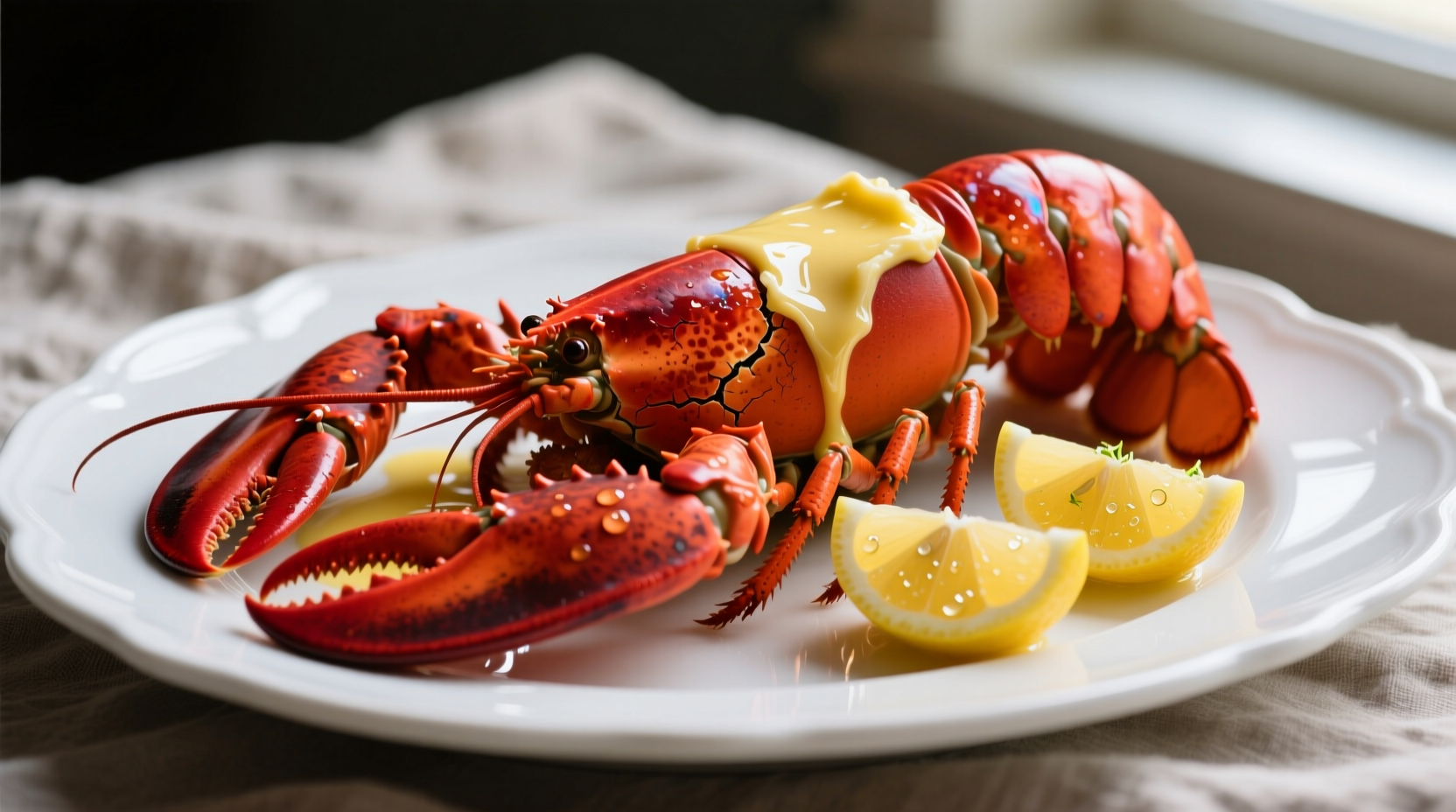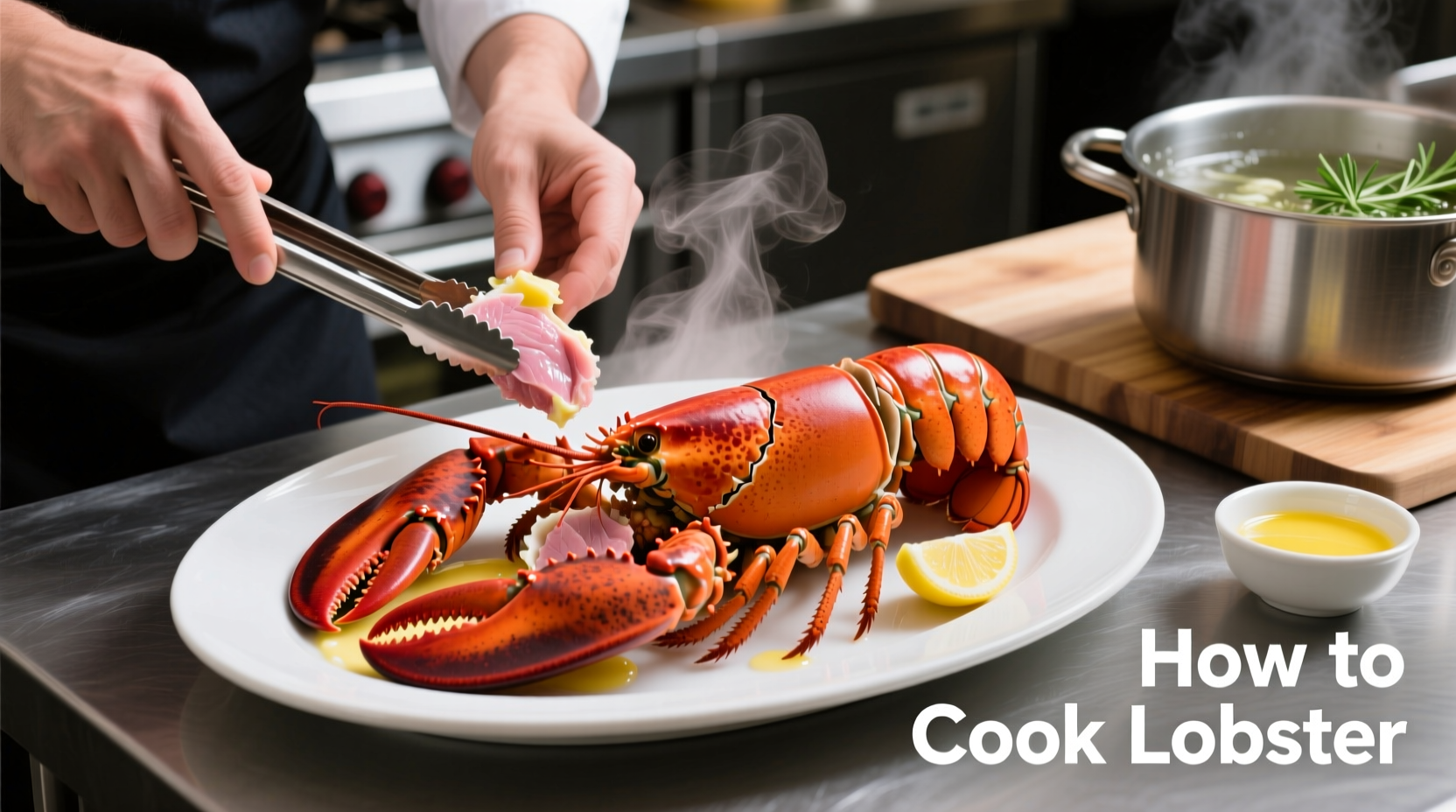Your Complete Guide to Cooking Lobster Perfectly
Nothing says special occasion like a perfectly cooked lobster. Whether you're celebrating an anniversary or simply treating yourself, mastering lobster preparation transforms an intimidating task into a rewarding culinary experience. This guide walks you through every step with professional techniques that guarantee tender, flavorful results—no Michelin-star kitchen required.
Why Proper Lobster Cooking Matters
Lobster's delicate texture and subtle sweetness can turn rubbery and bland with improper handling. According to the FDA Seafood Guidelines, cooking crustaceans to the correct internal temperature (145°F) ensures both food safety and optimal texture. Undercooked lobster risks foodborne illness, while overcooking creates tough, chewy meat that even butter can't rescue.
Essential Preparation: Setting Yourself Up for Success
Before you even consider heat, proper preparation determines your outcome. Start with live, active lobsters—they should curl their tails when lifted. The NOAA Fisheries Education Program confirms that freshness directly impacts flavor retention. Store live lobsters in the refrigerator covered with damp seaweed or newspaper—never in fresh water or ice directly.
Required tools:
- Heavy-bottomed stockpot (at least 8 quarts)
- Seafood cracker and pick
- Long-handled tongs
- Instant-read thermometer
- Butter warmer
Cooking Methods Compared: Which Technique Suits Your Needs?
| Method | Best For | Cook Time (1-1.5lb) | Texture Result | Salt Water Ratio |
|---|---|---|---|---|
| Boiling | First-time cooks | 8-12 minutes | Firm but tender | 1/4 cup per gallon |
| Steaming | Maximum sweetness retention | 10-14 minutes | More delicate | 1/3 cup per gallon |
| Grilling | Smoky flavor enthusiasts | 12-15 minutes | Slightly charred edges | Brine only |
Step-by-Step: Boiling Lobster (Most Reliable Method)
- Prepare salted water: Use 1/4 cup kosher salt per gallon of water—this mimics ocean salinity for optimal flavor absorption
- Bring to vigorous boil: Water must be at full rolling boil before adding lobster
- Handle humanely: Grasp live lobster firmly behind claws, plunge headfirst into water, cover immediately
- Time precisely: Cook 8 minutes for first pound, adding 4 minutes per additional pound
- Check doneness: Shell turns bright red, antennae pull out easily, internal temperature reaches 145°F
- Shock in ice bath: Immediately transfer to ice water for 2 minutes to stop cooking

Avoiding Common Mistakes That Ruin Lobster
Even experienced cooks make these critical errors:
- Insufficient salt: Without proper salinity, lobster meat tastes bland—use at least 1/4 cup salt per gallon
- Overcrowding pot: Cook only 2-3 lobsters at a time to maintain water temperature
- Ignoring temperature: Use an instant-read thermometer—visual cues alone aren't reliable
- Skipping ice bath: Residual heat continues cooking, leading to tough meat
Serving Like a Pro: Elevating Your Presentation
Professional chefs follow these presentation principles from the Culinary Institute of America's Seafood Curriculum:
- Serve immediately while hot—lobster cools rapidly
- Provide multiple dipping options: clarified butter, lemon-garlic aioli, herb-infused olive oil
- Accompany with simple sides: roasted corn, drawn butter potatoes, fresh green salad
- Use proper tools: include lobster crackers, picks, and finger bowls
Troubleshooting Your Lobster Results
Problem: Meat sticks to shell
Solution: You likely boiled at too low a temperature. Maintain vigorous boil throughout cooking.
Problem: Mushy texture
Solution: Lobster was dead before cooking. Always start with live, active specimens.
Problem: Grayish meat
Solution: Undercooked. Return to boiling water for 2-3 additional minutes.
Advanced Techniques for Culinary Enthusiasts
Once you've mastered basics, try these restaurant-level methods:
- Dry-poaching: Cook in clarified butter at 180°F for 10 minutes—creates incredibly tender meat
- Split-and-grill: Butterfly lobster, brush with herb butter, grill shell-side down for smoky complexity
- Broth-poaching: Simmer in fish stock with aromatics for infused flavor without saltiness
Storage and Leftover Considerations
Refrigerate cooked lobster in airtight container for up to 2 days. The University of Maine's Lobster Institute confirms that reheating requires extreme care—steam gently for 3-4 minutes rather than microwaving to prevent toughness. Never freeze cooked lobster as texture deteriorates significantly.
Frequently Asked Questions
How do I humanely cook live lobster?
The most humane method involves placing live lobster in freezer for 15-20 minutes to induce sleep before boiling. Alternatively, quickly plunge headfirst into vigorously boiling salted water and cover immediately. This minimizes suffering while ensuring food safety.
What's the difference between boiling and steaming lobster?
Boiling cooks faster (8-12 minutes) with more intense flavor penetration from salted water, while steaming (10-14 minutes) preserves more delicate sweetness with slightly softer texture. Steaming requires higher salt concentration in water to compensate for less direct contact.
How can I tell when lobster is perfectly cooked?
Perfectly cooked lobster shows these signs: shell turns bright red, meat becomes opaque white, antennae pull out easily, and internal temperature reaches 145°F. The claws should feel firm but not hard when squeezed.
Why does my cooked lobster meat sometimes feel rubbery?
Rubbery texture almost always indicates overcooking. Lobster continues cooking from residual heat after removal from water—always transfer to ice bath immediately. Cooking time varies by size; a 1.5lb lobster needs 8-10 minutes maximum in boiling water.
Can I cook frozen lobster tails without thawing?
Never cook frozen lobster tails directly. Thaw overnight in refrigerator or under cold running water for 30 minutes. Cooking from frozen causes uneven cooking—outside becomes tough while center remains potentially unsafe. Properly thawed tails cook in 8-10 minutes.











 浙公网安备
33010002000092号
浙公网安备
33010002000092号 浙B2-20120091-4
浙B2-20120091-4